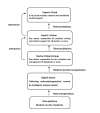mHealth For Aging China: Opportunities and Challenges
- PMID: 26816664
- PMCID: PMC4723234
- DOI: 10.14336/AD.2015.1011
mHealth For Aging China: Opportunities and Challenges
Abstract
The aging population with chronic and age-related diseases has become a global issue and exerted heavy burdens on the healthcare system and society. Neurological diseases are the leading chronic diseases in the geriatric population, and stroke is the leading cause of death in China. However, the uneven distribution of caregivers and critical healthcare workforce shortages are major obstacles to improving disease outcome. With the advancement of wearable health devices, cloud computing, mobile technologies and Internet of Things, mobile health (mHealth) is rapidly developing and shows a promising future in the management of chronic diseases. Its advantages include its ability to improve the quality of care, reduce the costs of care, and improve treatment outcomes by transferring in-hospital treatment to patient-centered medical treatment at home. mHealth could also enhance the international cooperation of medical providers in different time zones and the sharing of high-quality medical service resources between developed and developing countries. In this review, we focus on trends in mHealth and its clinical applications for the prevention and treatment of diseases, especially aging-related neurological diseases, and on the opportunities and challenges of mHealth in China. Operating models of mHealth in disease management are proposed; these models may benefit those who work within the mHealth system in developing countries and developed countries.
Keywords: aging-related neurological diseases; developing countries; mHealth.
Figures

Similar articles
-
Using Mobile Apps for Health Management: A New Health Care Mode in China.JMIR Mhealth Uhealth. 2019 Jun 3;7(6):e10299. doi: 10.2196/10299. JMIR Mhealth Uhealth. 2019. PMID: 31162131 Free PMC article.
-
Perceptions and Acceptance of mHealth in Patients With Cardiovascular Diseases: A Cross-Sectional Study.JMIR Mhealth Uhealth. 2019 Feb 4;7(2):e10117. doi: 10.2196/10117. JMIR Mhealth Uhealth. 2019. PMID: 30714942 Free PMC article.
-
"Mobile Health" for the Management of Spondyloarthritis and Its Application in China.Curr Rheumatol Rep. 2019 Nov 19;21(11):61. doi: 10.1007/s11926-019-0860-7. Curr Rheumatol Rep. 2019. PMID: 31741083 Review.
-
Analysis of Requirements for Developing an mHealth-Based Health Management Platform.JMIR Mhealth Uhealth. 2017 Aug 3;5(8):e117. doi: 10.2196/mhealth.5890. JMIR Mhealth Uhealth. 2017. PMID: 28778840 Free PMC article.
-
Application of Mobile Health Technologies Aimed at Salt Reduction: Systematic Review.JMIR Mhealth Uhealth. 2019 Apr 17;7(4):e13250. doi: 10.2196/13250. JMIR Mhealth Uhealth. 2019. PMID: 30994467 Free PMC article.
Cited by
-
Awareness of initiative practice for health in the Chinese population: A questionnaire survey based on a network platform.World J Clin Cases. 2022 Jun 6;10(16):5241-5252. doi: 10.12998/wjcc.v10.i16.5241. World J Clin Cases. 2022. PMID: 35812685 Free PMC article.
-
Increasing Diverticulosis in an Aging Population: A Colonoscopy-Based Study of 5-Year Trends in 26 463 Patients in Northern China.Med Sci Monit. 2018 May 6;24:2825-2831. doi: 10.12659/MSM.906864. Med Sci Monit. 2018. PMID: 29730668 Free PMC article.
-
Developing an Integrated Evaluation Model for Physician Comprehensive Workload Tethered to Outpatient Practice: An Empirical Study From China.Front Public Health. 2022 May 19;10:847613. doi: 10.3389/fpubh.2022.847613. eCollection 2022. Front Public Health. 2022. PMID: 35664107 Free PMC article.
-
Evaluating the Usability of mHealth Apps: An Evaluation Model Based on Task Analysis Methods and Eye Movement Data.Healthcare (Basel). 2024 Jun 30;12(13):1310. doi: 10.3390/healthcare12131310. Healthcare (Basel). 2024. PMID: 38998845 Free PMC article.
-
Transnational Research Networks in Chinese Scientific Production. An Investigation on Health-Industry Related Sectors.Int J Environ Res Public Health. 2017 Aug 29;14(9):975. doi: 10.3390/ijerph14090975. Int J Environ Res Public Health. 2017. PMID: 28850072 Free PMC article.
References
-
- Volkert J,Schulz H,Härter M,Wlodarczyk O,Andreas S (2013). The prevalence of mental disorders in older people in Western countries - a meta-analysis. Ageing Res Rev, 12:339-353. - PubMed
-
- Chen Z,Yu J,Song Y,Chui D (2010). Aging Beijing: challenges and strategies of health care for the elderly. Ageing Res Rev, 9 Suppl 1:S2-5. - PubMed
-
- Wang W,Hu SS,Kong LZ, et al. (2014). Summary of report on cardiovascular diseases in China2012. Biomed Environ Sci, 27:552-558. - PubMed
-
- Leng SX,Tian XP,Durso S, et al. (2008). The aging population and development of geriatrics in China. J Am Geriatr Soc, 56:571-573. - PubMed
-
- Ren J,Zhang YX,Guo XL, et al. (2014). Analysis on the knowledge, attitude and behavior of salt-related hypertension in adolescents of Shandong in 2011. Chin J Hypertens, 22:146-150.
Publication types
LinkOut - more resources
Full Text Sources
Other Literature Sources
Medical
